Here’s your feel good story for the day. NOAA researchers have captured what are probably the best aerial photos of wild Killer Whales ever and are here to explain how the images demonstrate an incredibly strong, collaborative family bond.
Take the time to sit down and enjoy this video, in which marine mammal biologist John Durban walks you through what’s happening in each image. You’ll see other orcas bringing dinner to a nursing mother and family bonds that last as the whales mature throughout their life spans.
All photos and captions courtesy NOAA:
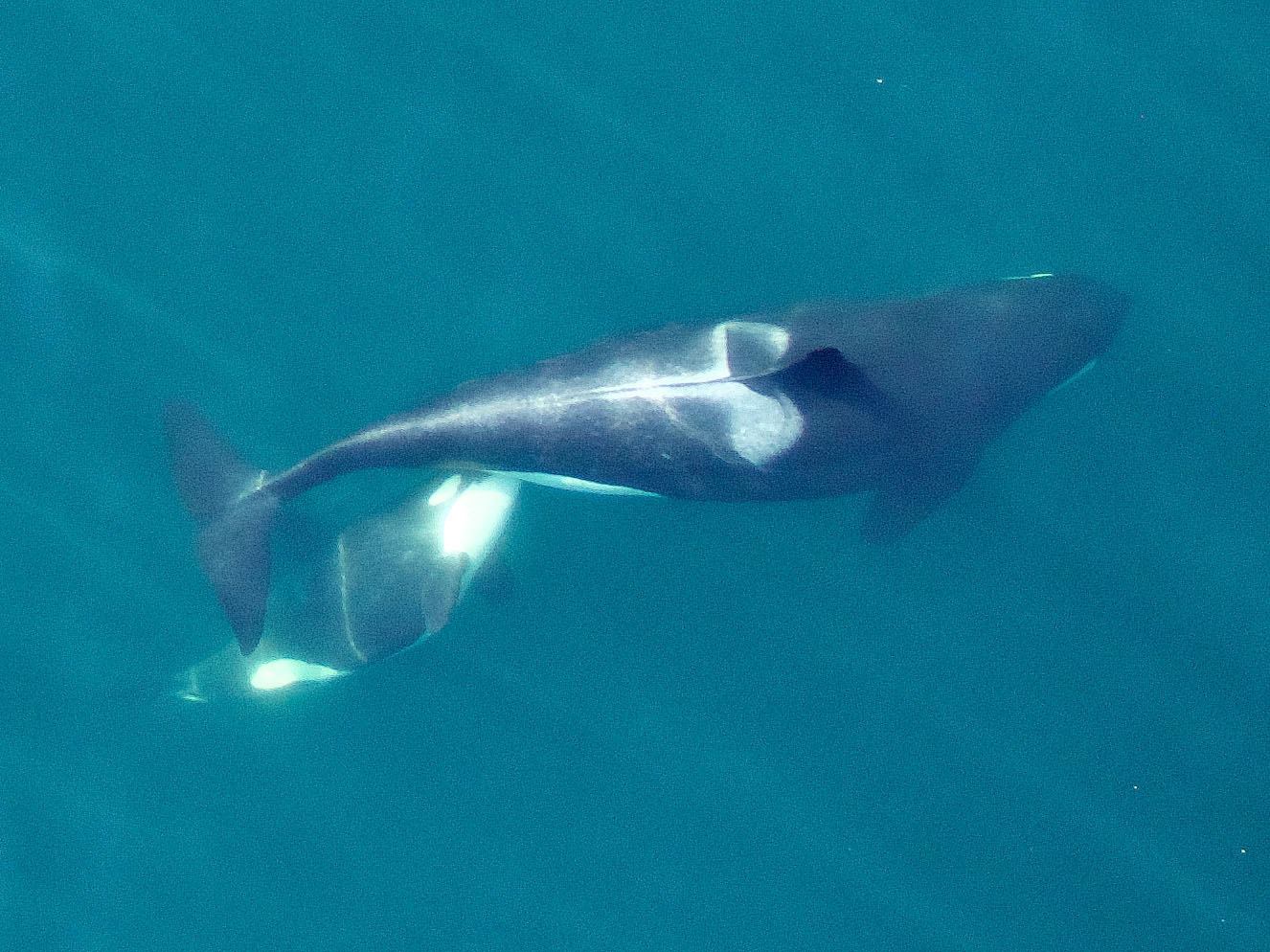
An adult female Southern Resident killer whale (L94) nursing her calf. Lactation is energetically costly for these whales, and future photogrammetry images of the calf’s growth and the mother’s condition will reveal if the mother is getting enough food to support both herself and the calf. Note the distinctive saddle patch on the mother. This allows scientists to recognise individual whales in photographs.
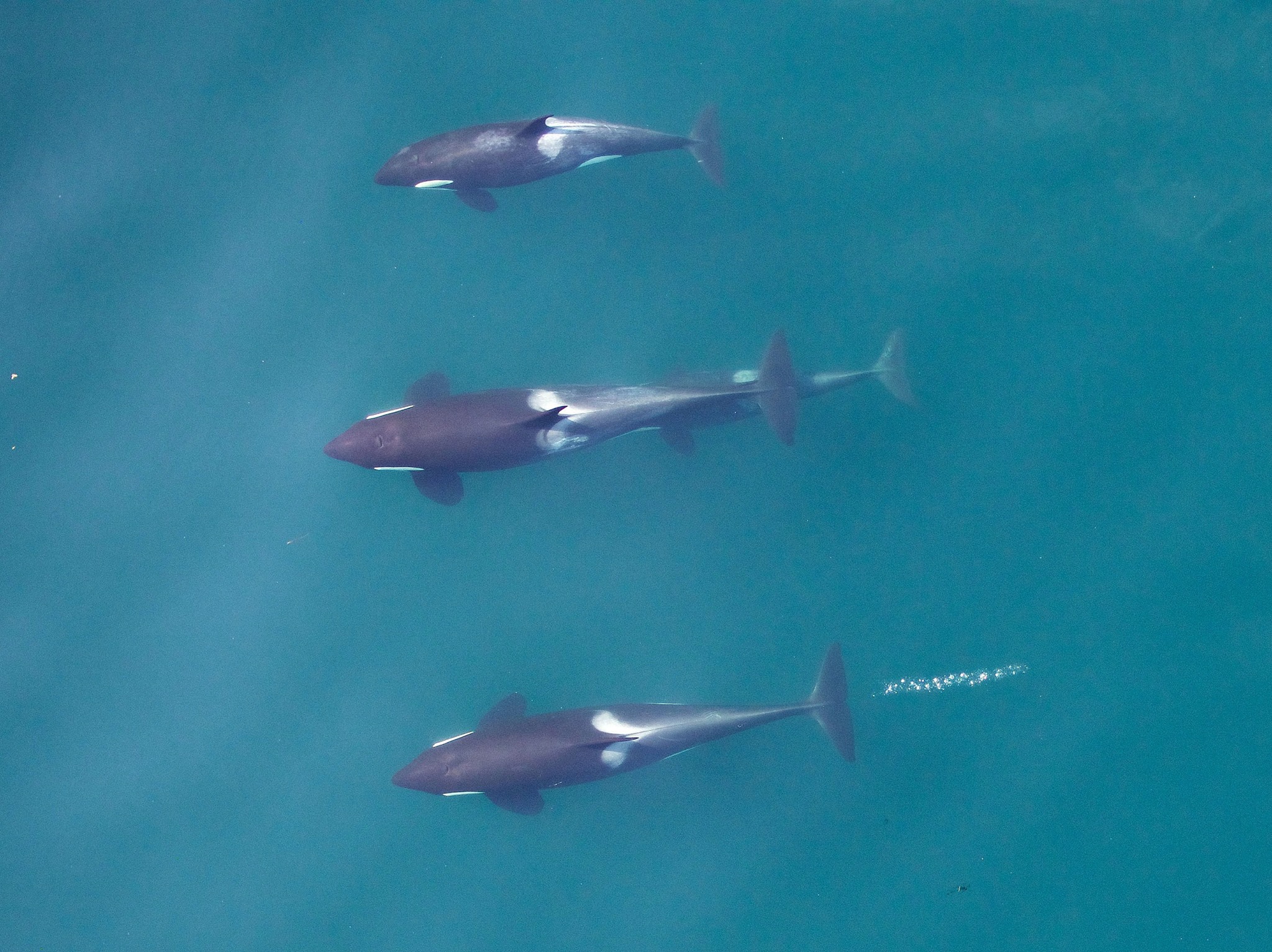
Photogrammetry image the A42 family group of Northern residents. Killer whales travel in their matrilineal family group their entire lives. Here the matriarch A42 is in the middle with her newest calf beneath her. Note A42’s distinctive saddle patch. This allows scientists to recognise individual whales from the photographs and assess their health.
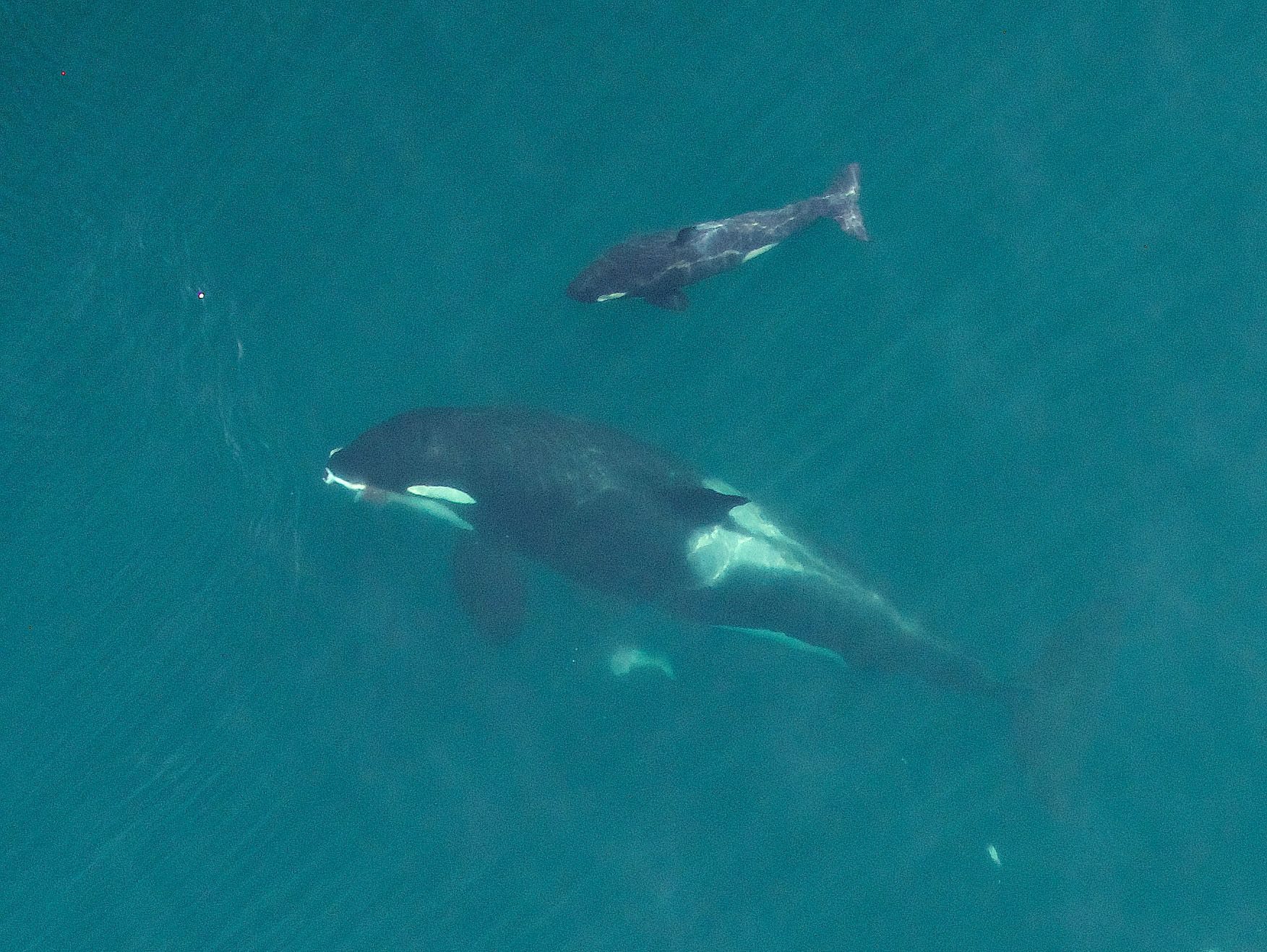
New mother L91 eating a salmon as her newborn calf looks on. This fish was caught and given to her by other members of the family group, showing that relatives help her as she cares for her calf. Image to be used for health assessment.
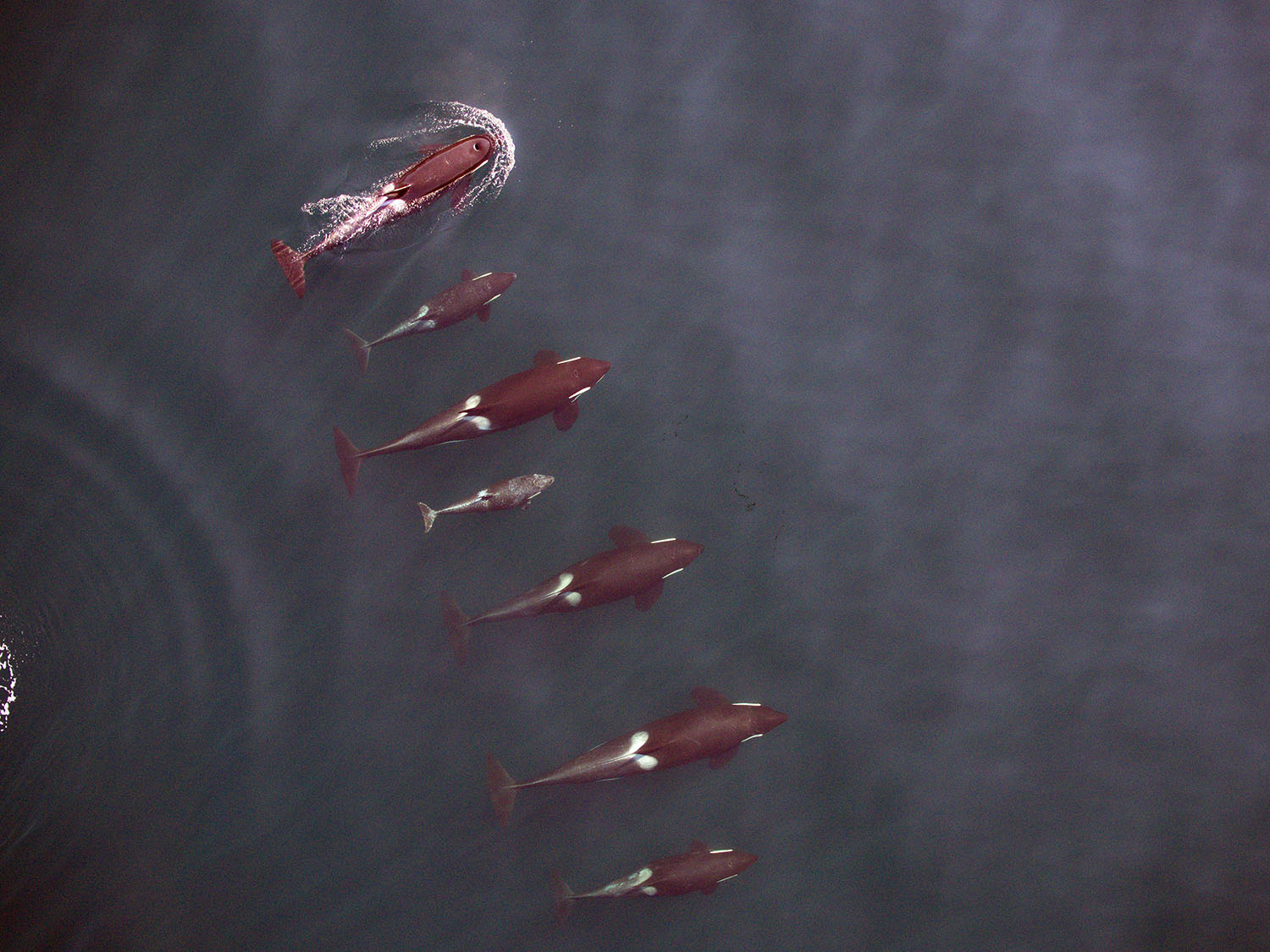
A photogrammetry image of the entire I16 matriline of Northern Resident killer whales taken in 2014. This image shows the size of whales at different ages. Note the small, grey calf in the middle (I144), only a few months old, swimming to the right of its mother (I51). To the left of the mother is the calf’s older sibling (I129). Images to be used for health assessment.
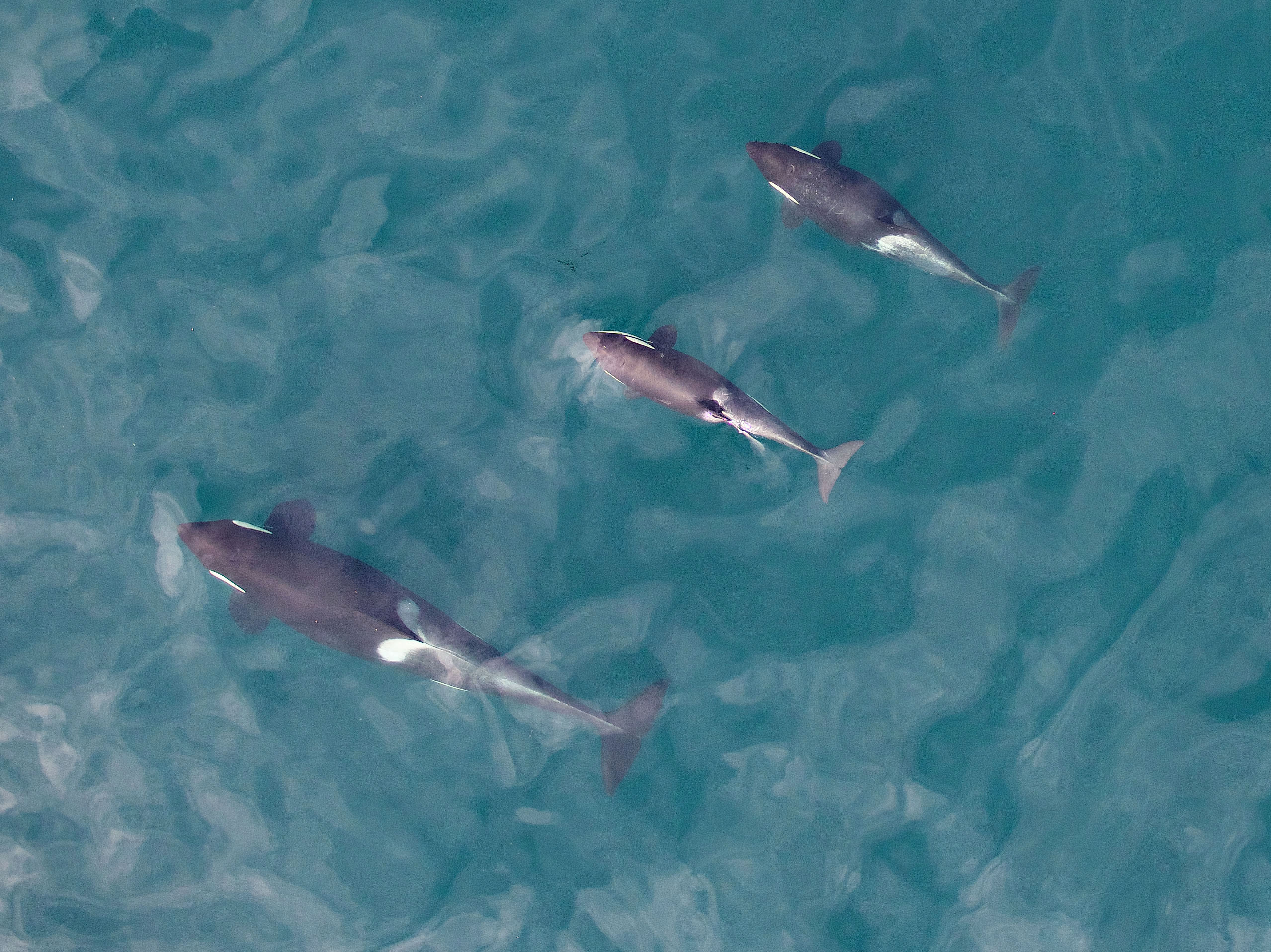
Another image of I51 and her two offspring, this one taken in 2015. Comparing this image to the one taken the year before, one can see that the youngest calf (I144) has lost its grey mottling and grown considerably. It is now almost half the length of its mother and approaching the length of its older sibling (I129). These images show how scientists can track the growth of individual whales across time to monitor their health and condition.

Photogrammetry image of an adult female Southern Resident (J16) as she’s about to surface with her youngest calf, born earlier this year, alongside. Future photogrammetry will allow scientists to monitor the growth of the calf and condition of the mother to ensure they are getting an adequate food supply.
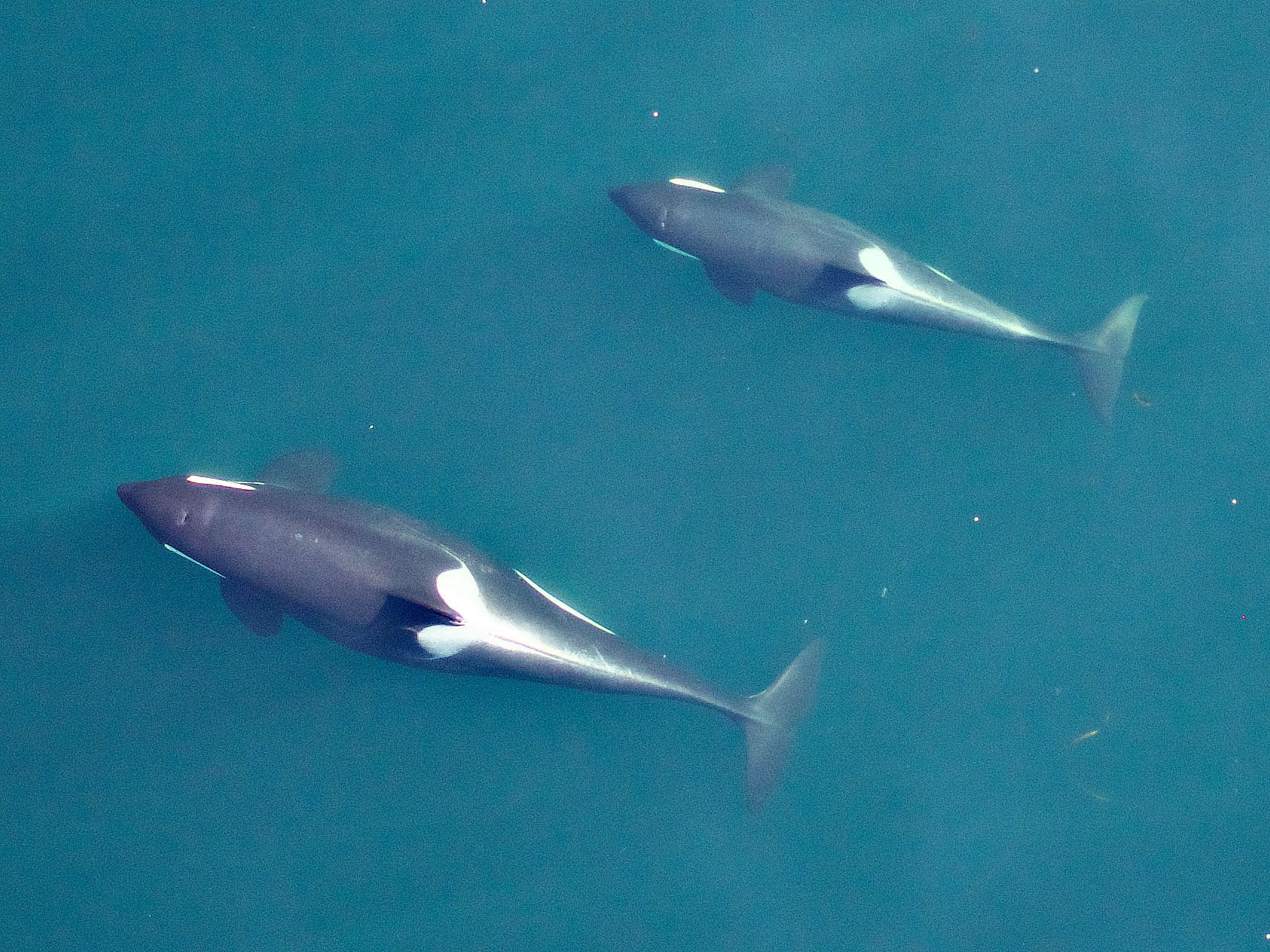
Photogrammetry image of an adult female Southern Resident killer whale (J28) travelling with her juvenile offspring (J46). This image reveals the wide body profile of the mother, indicating that she is likely pregnant and due to have a second calf in the coming months.
